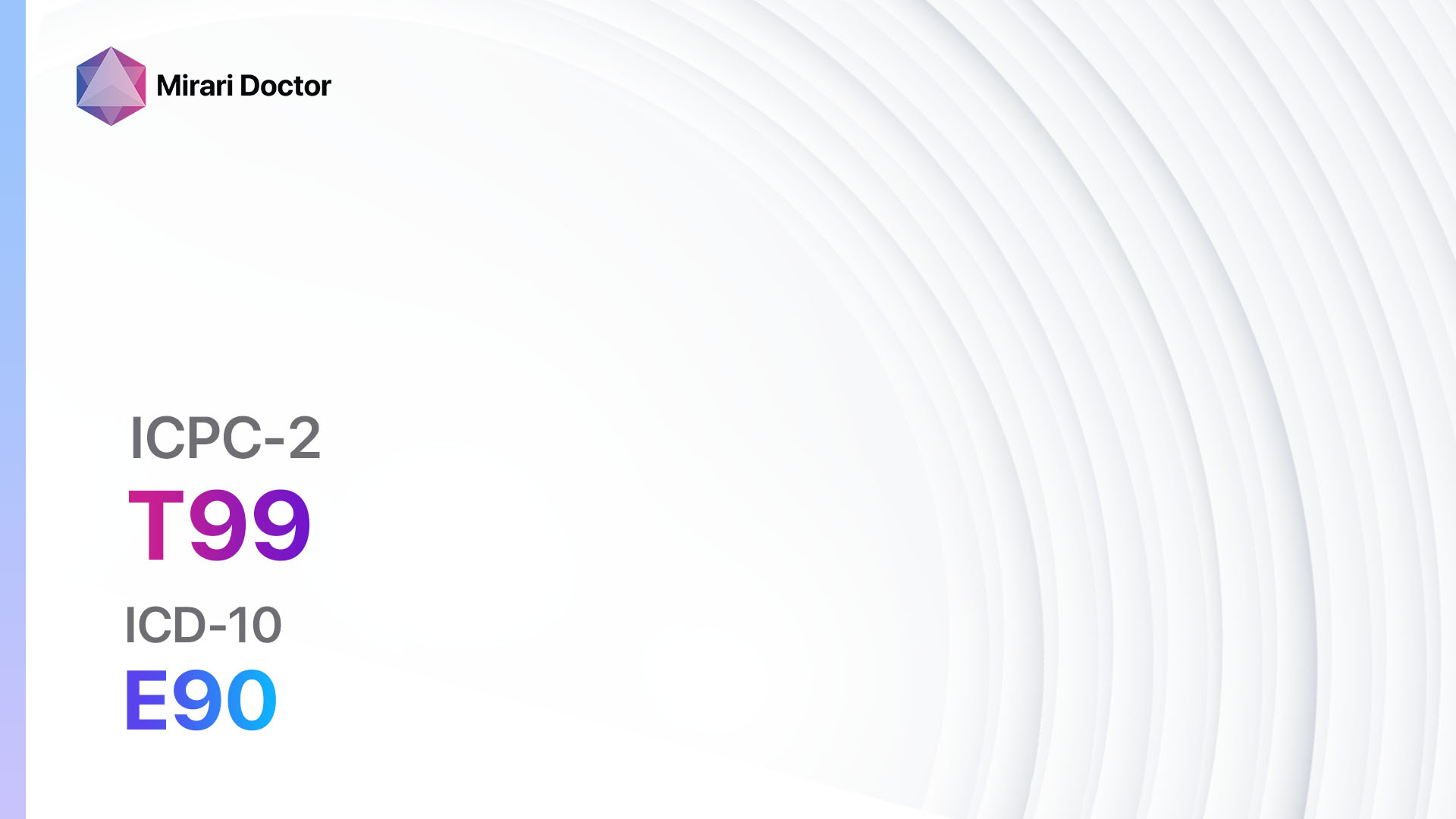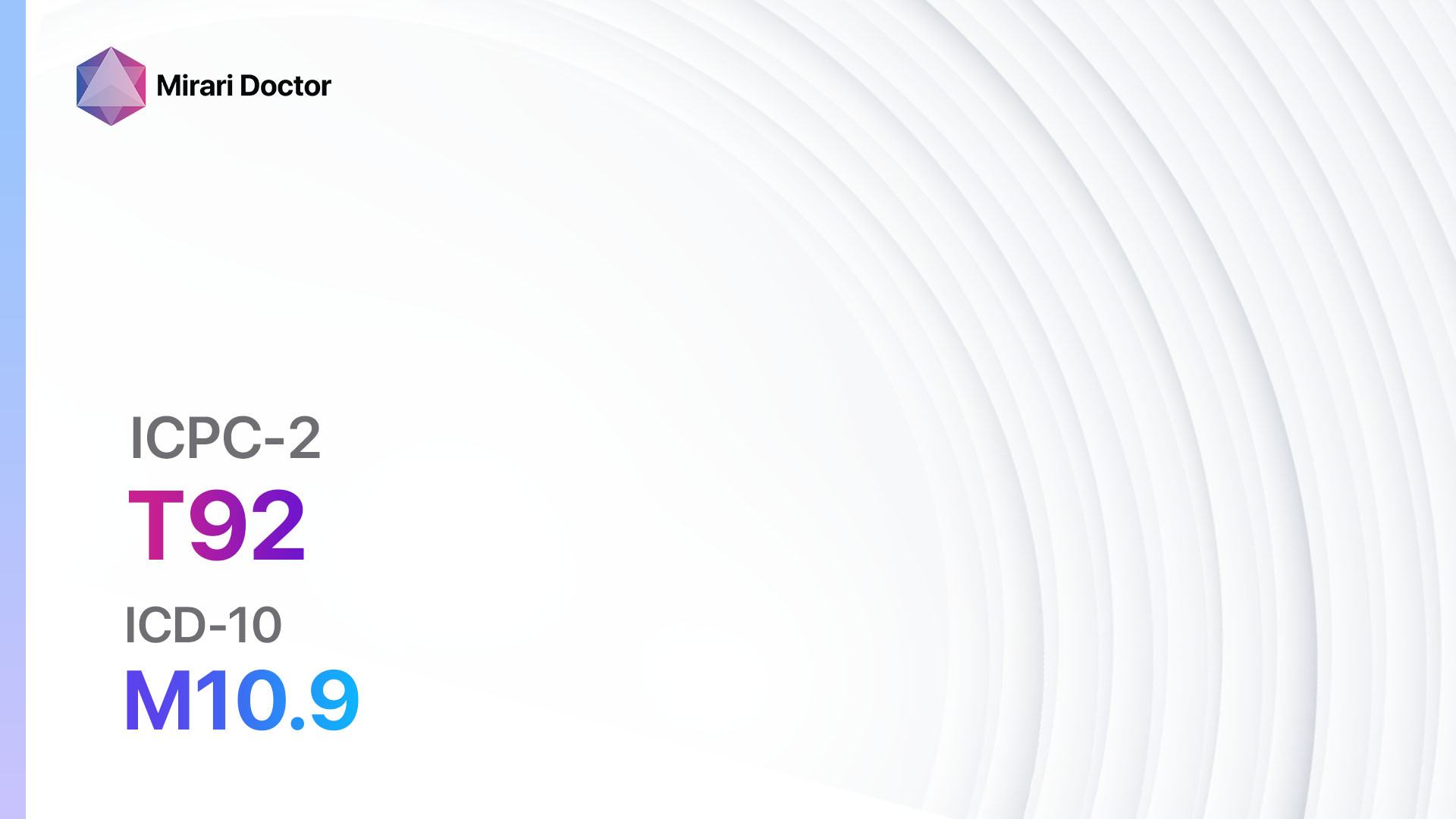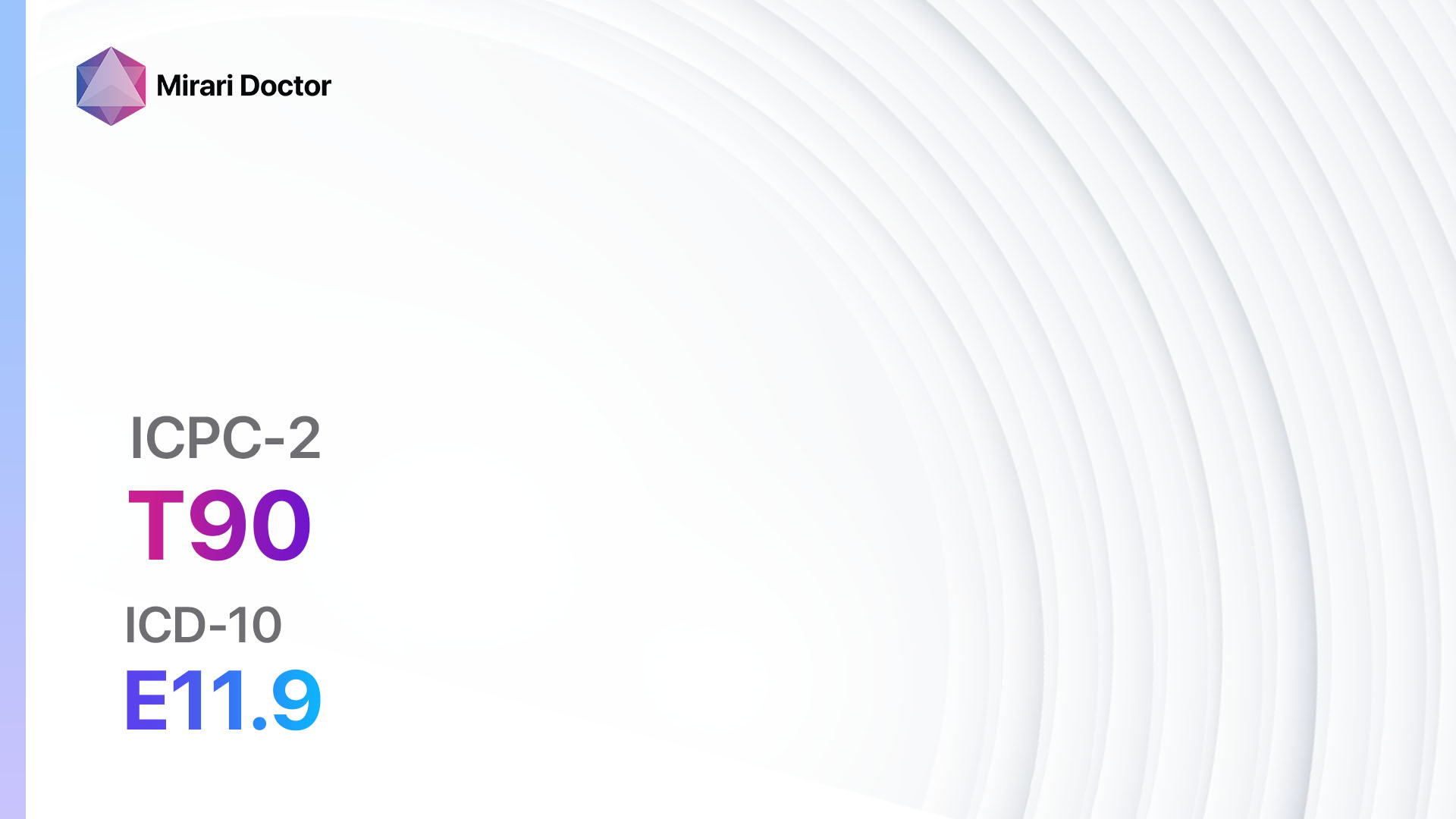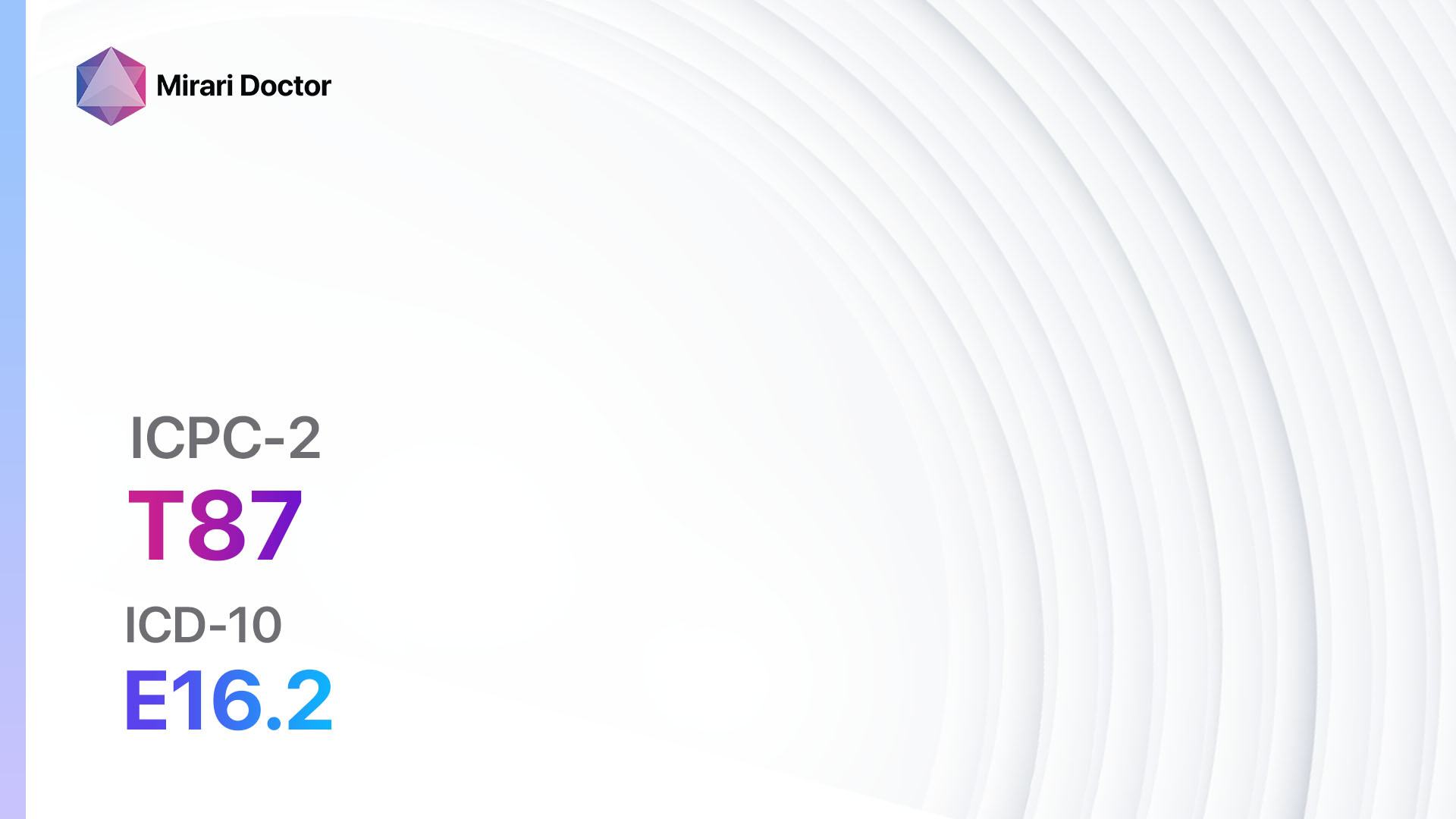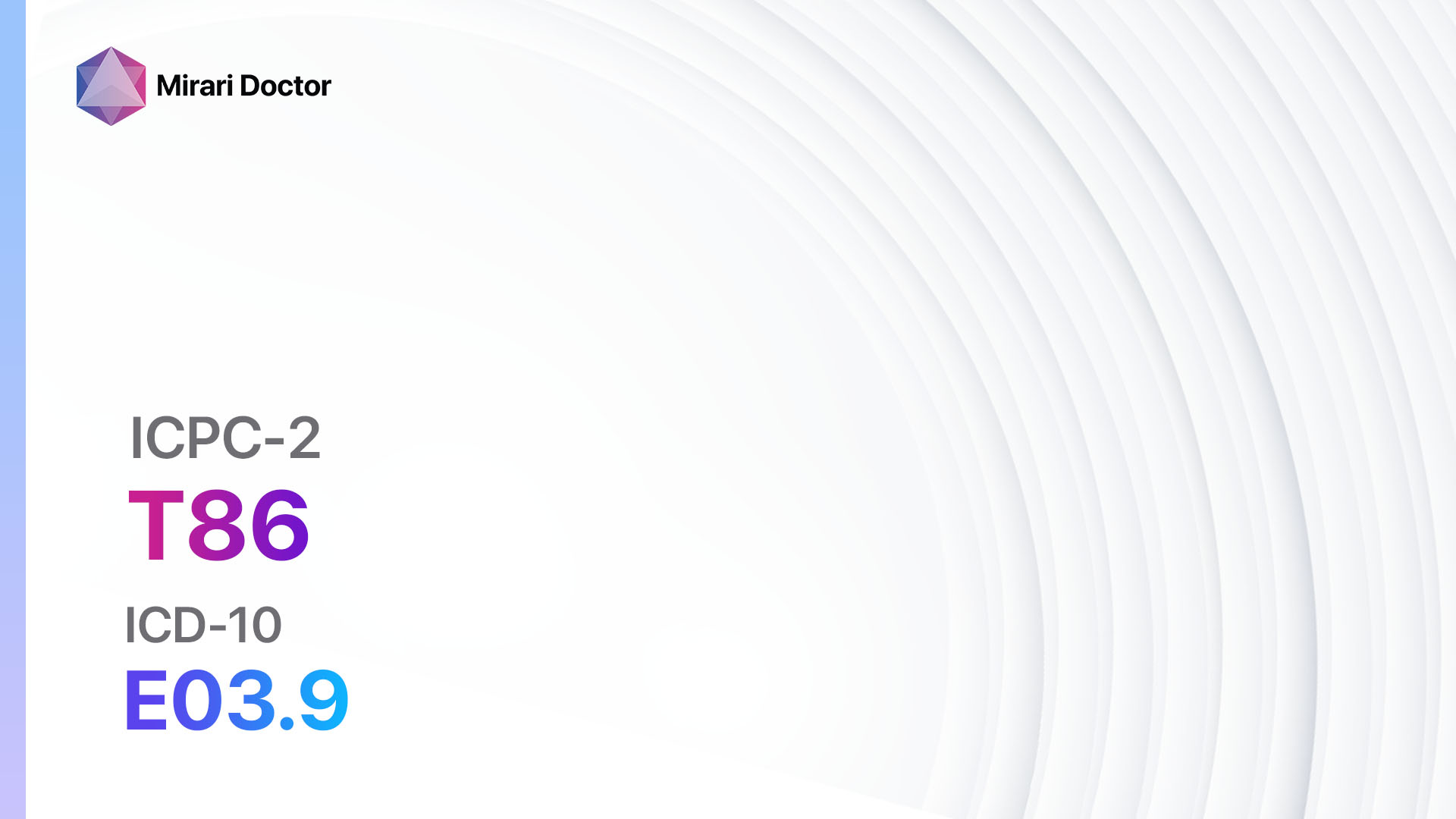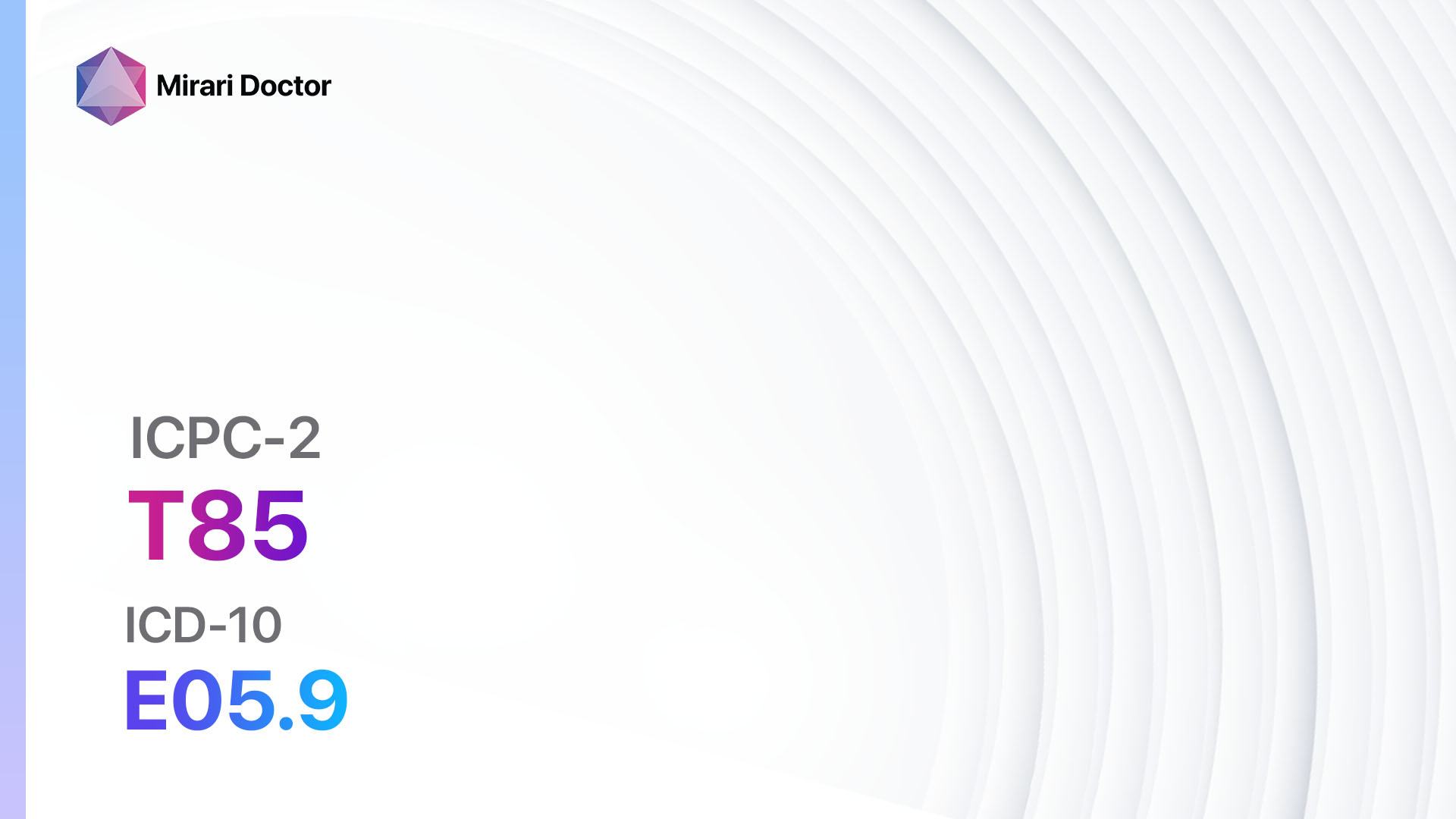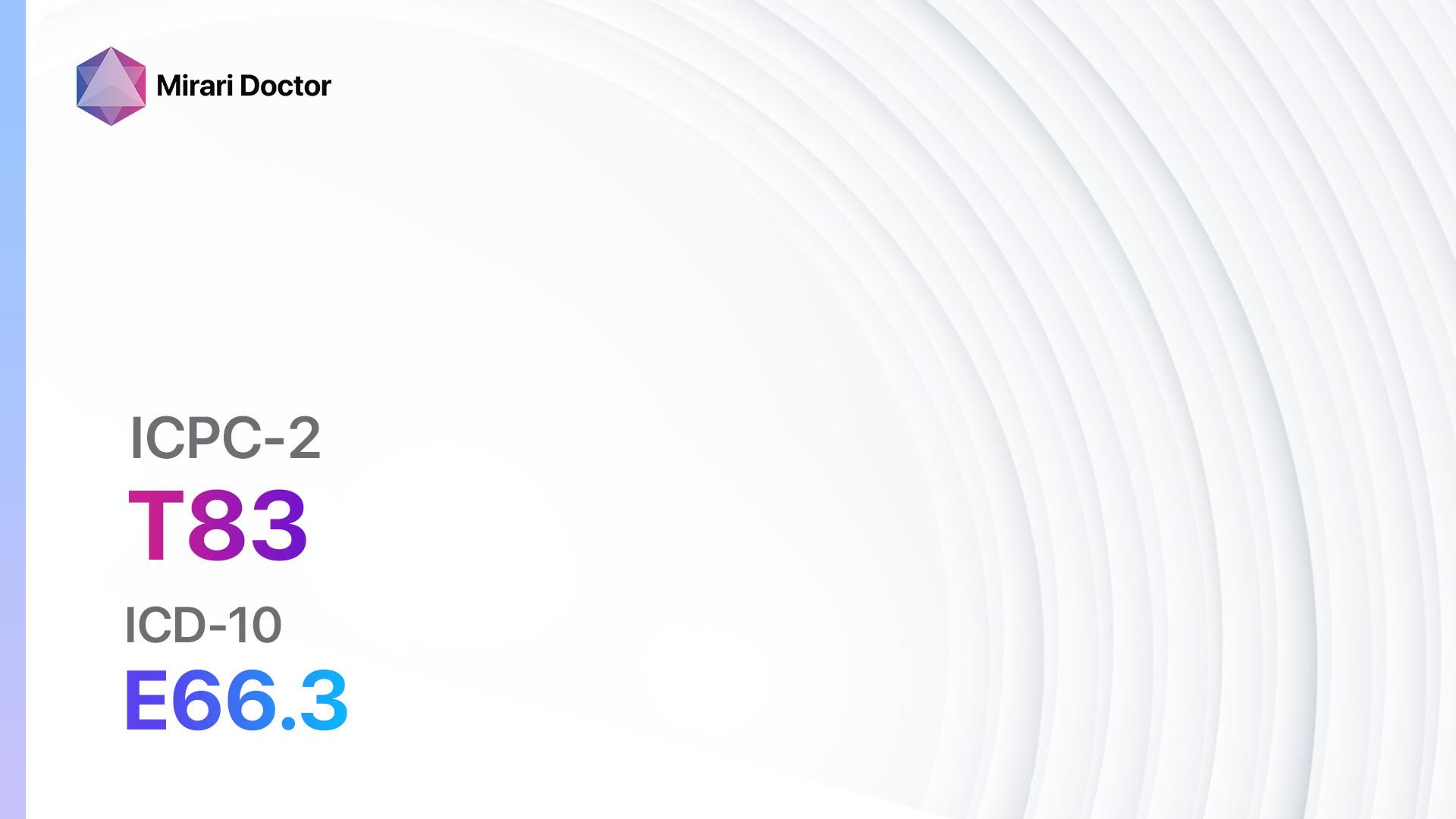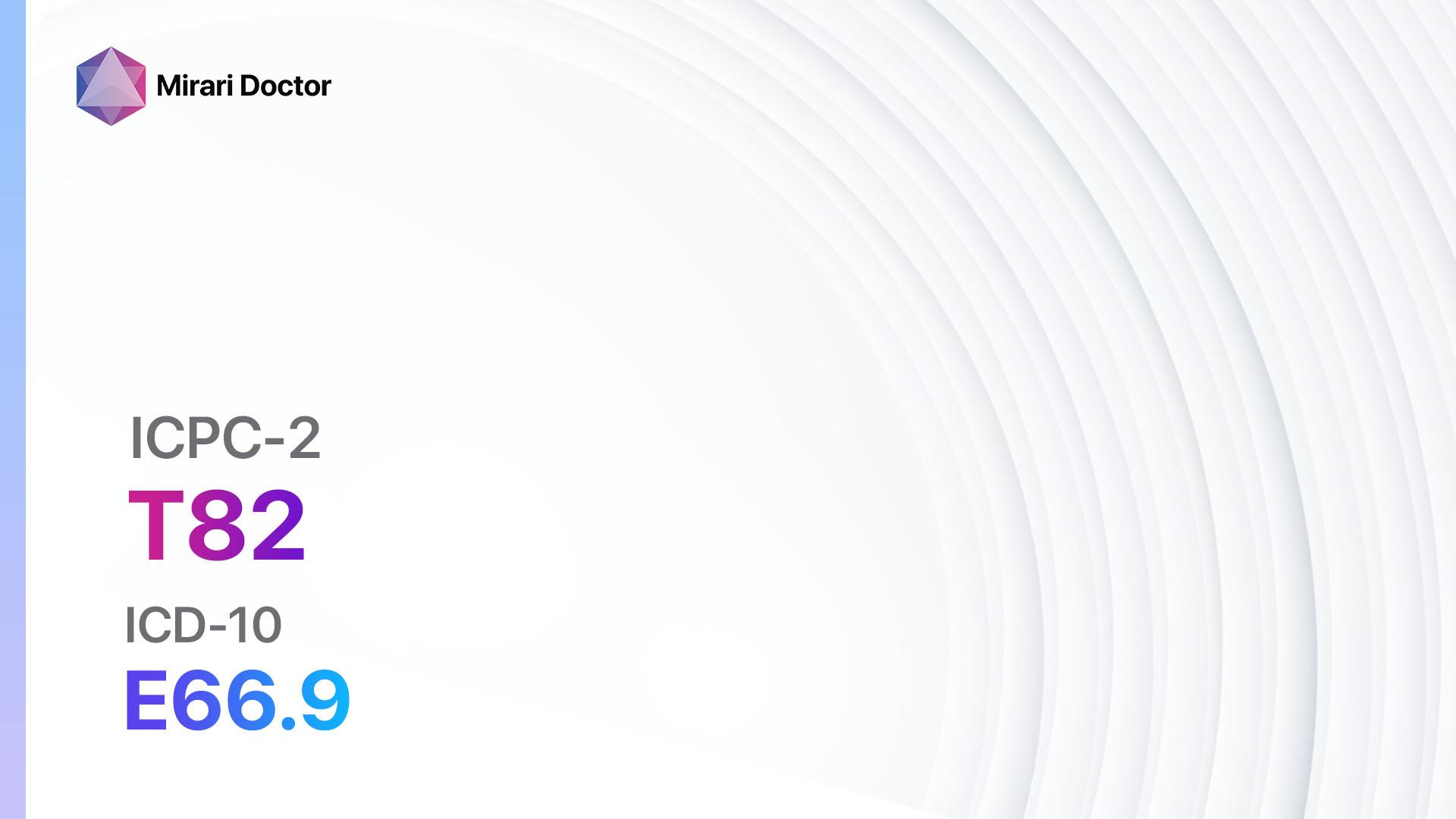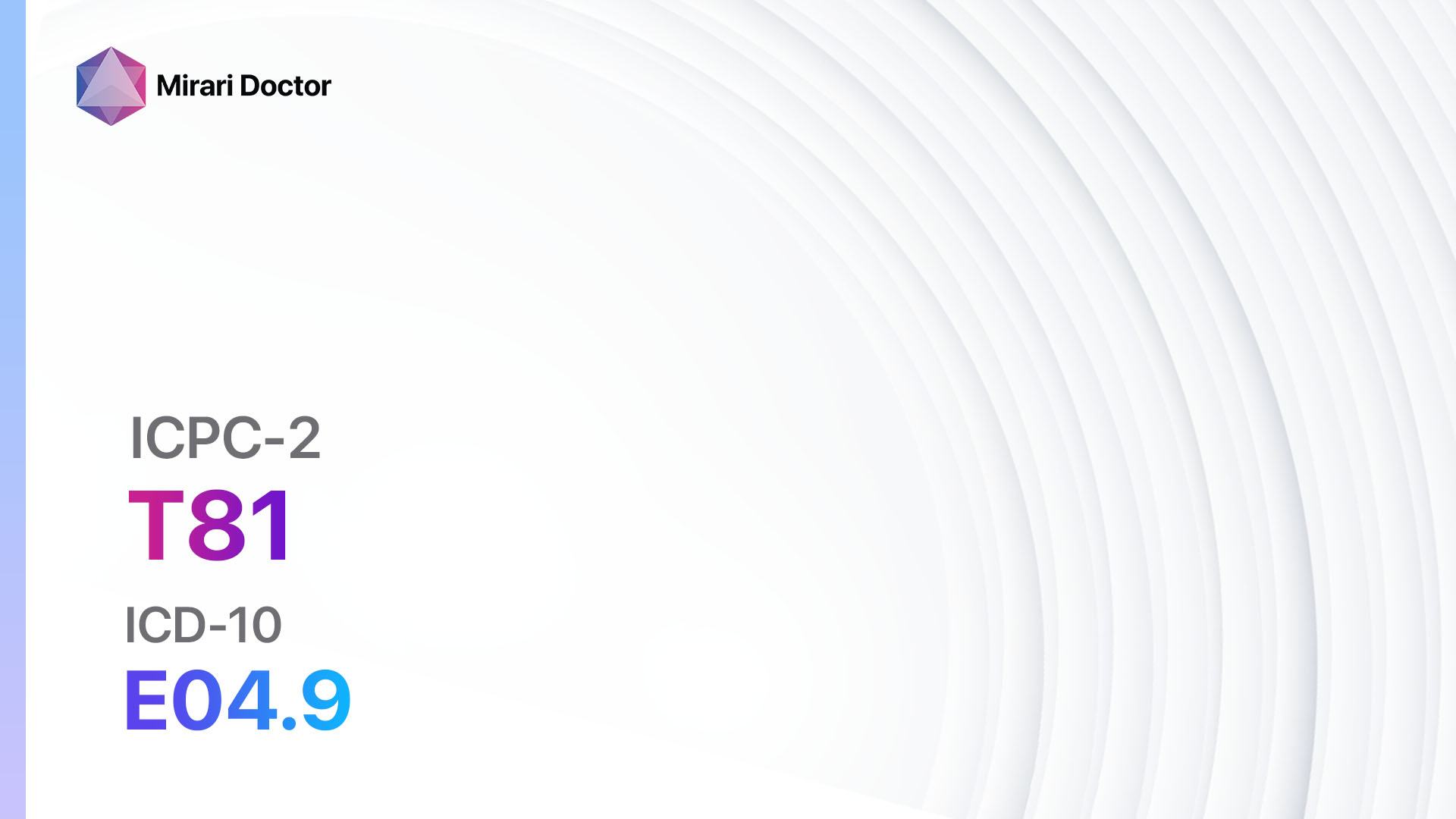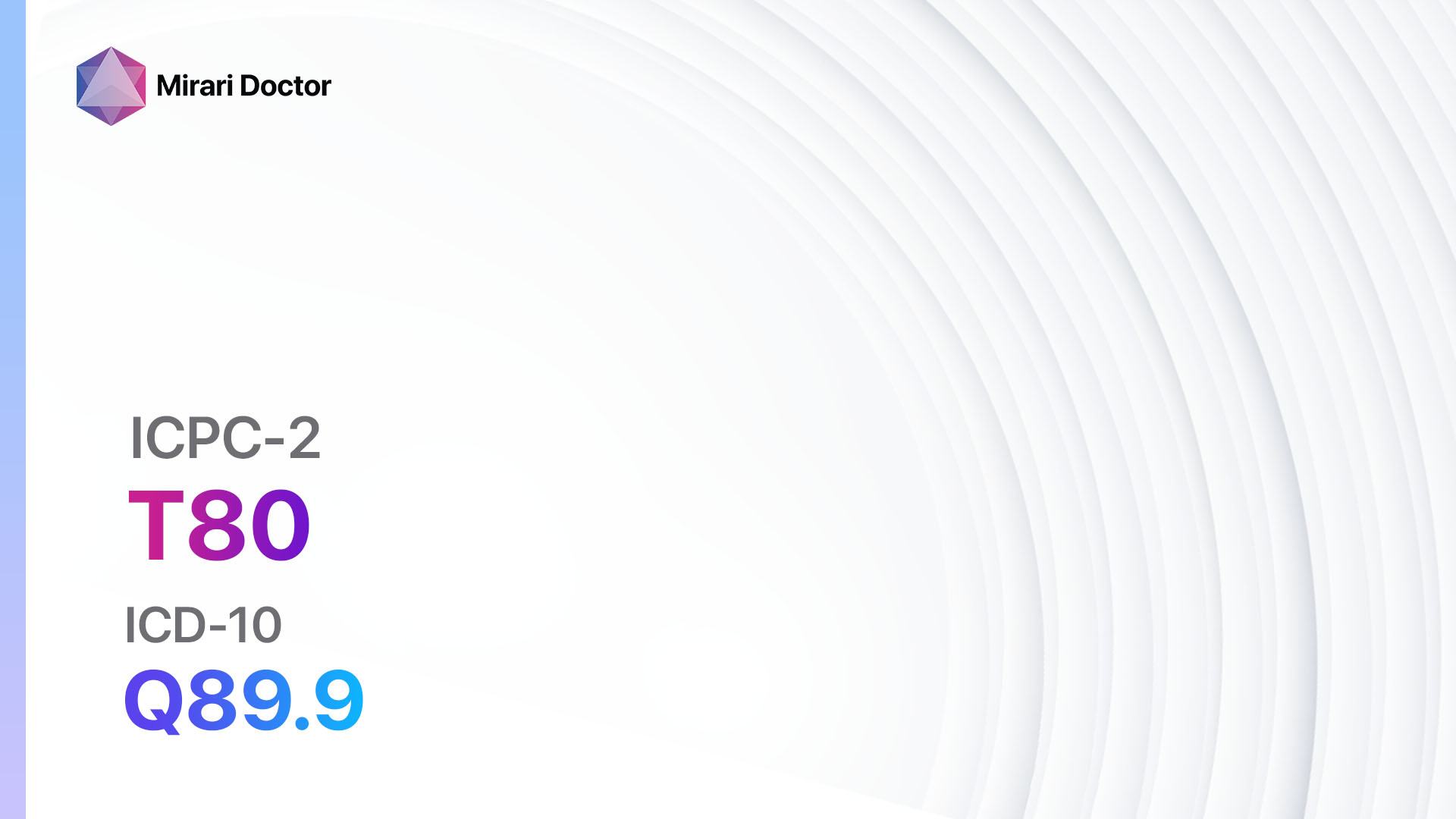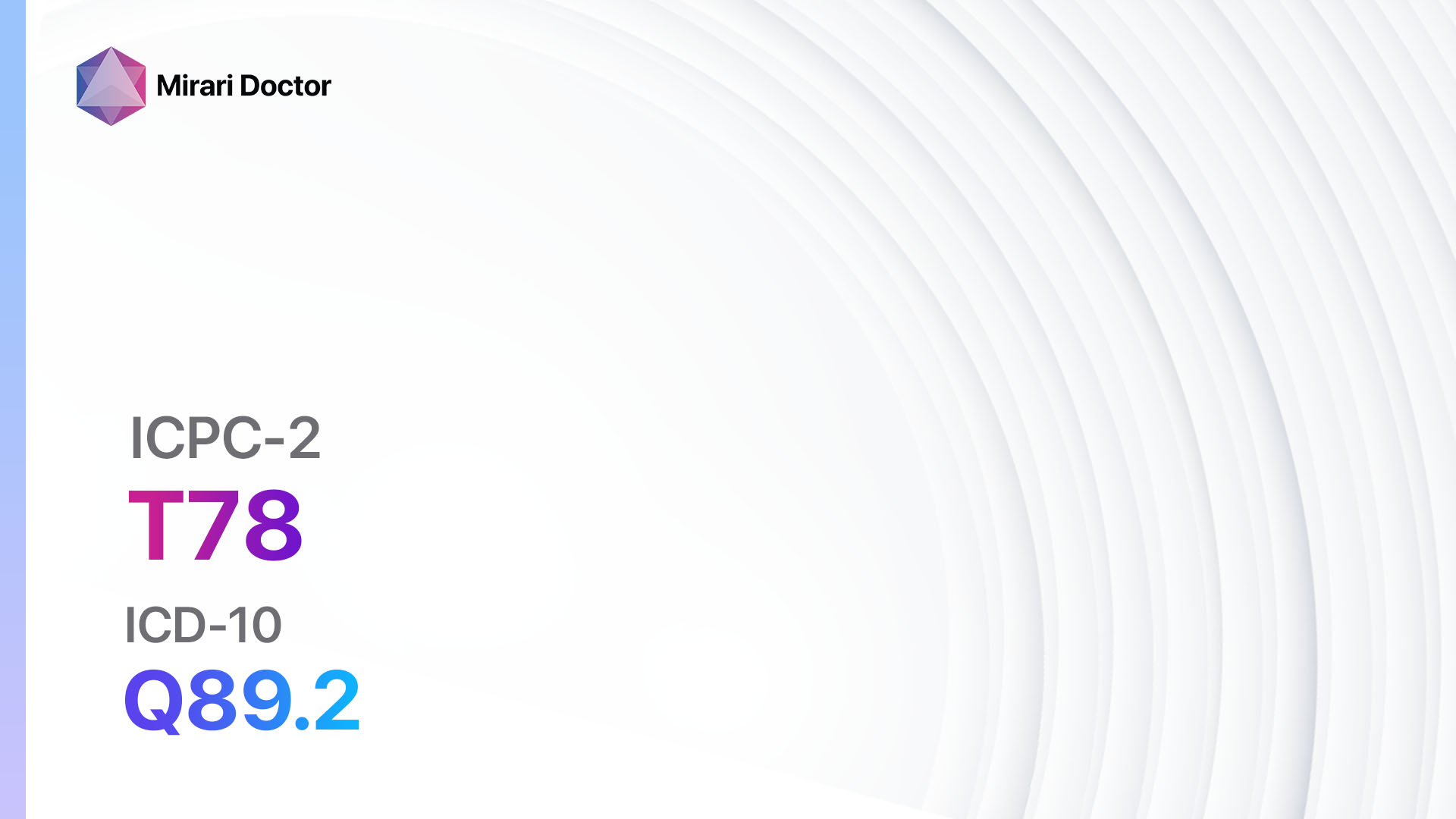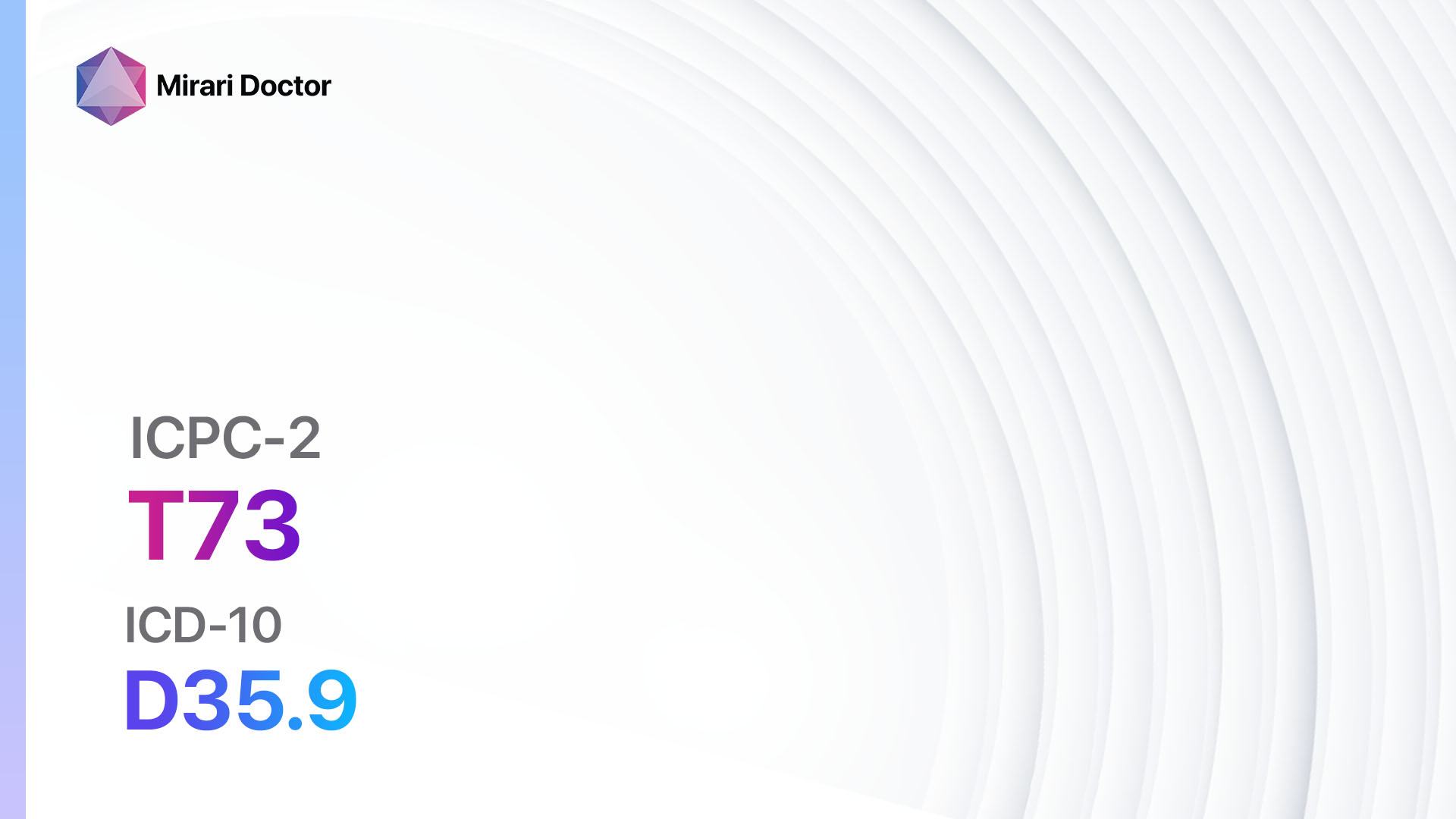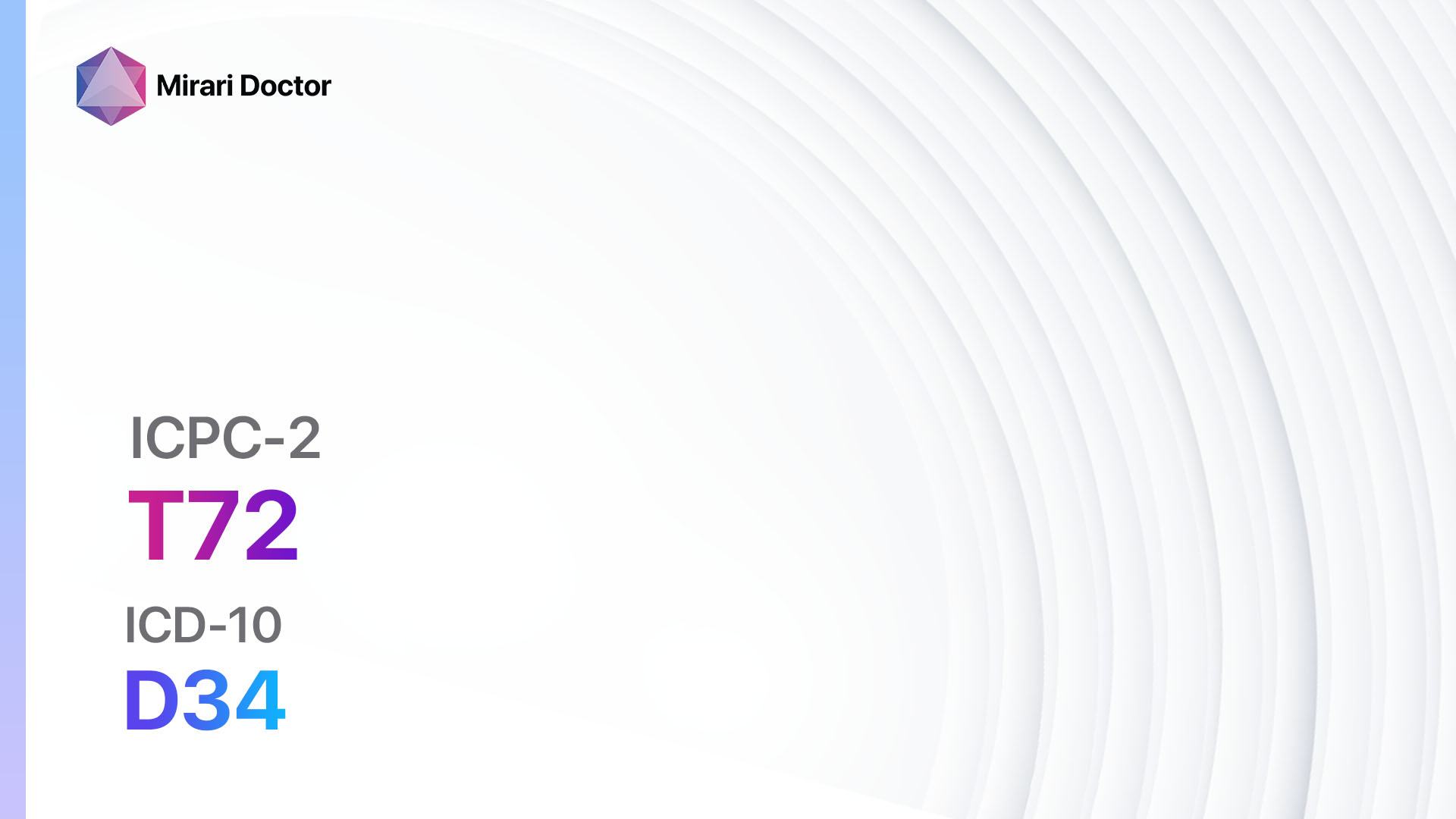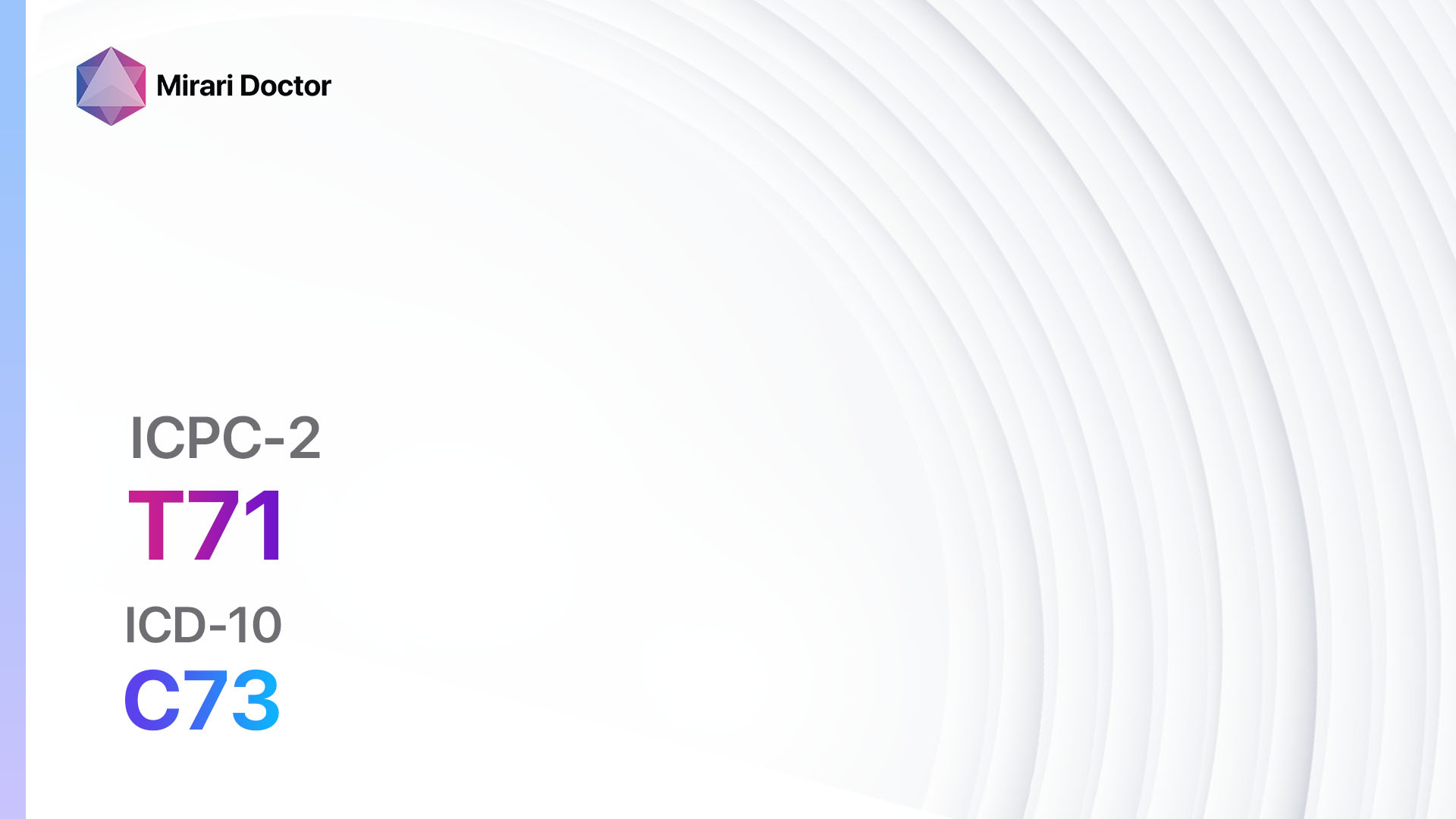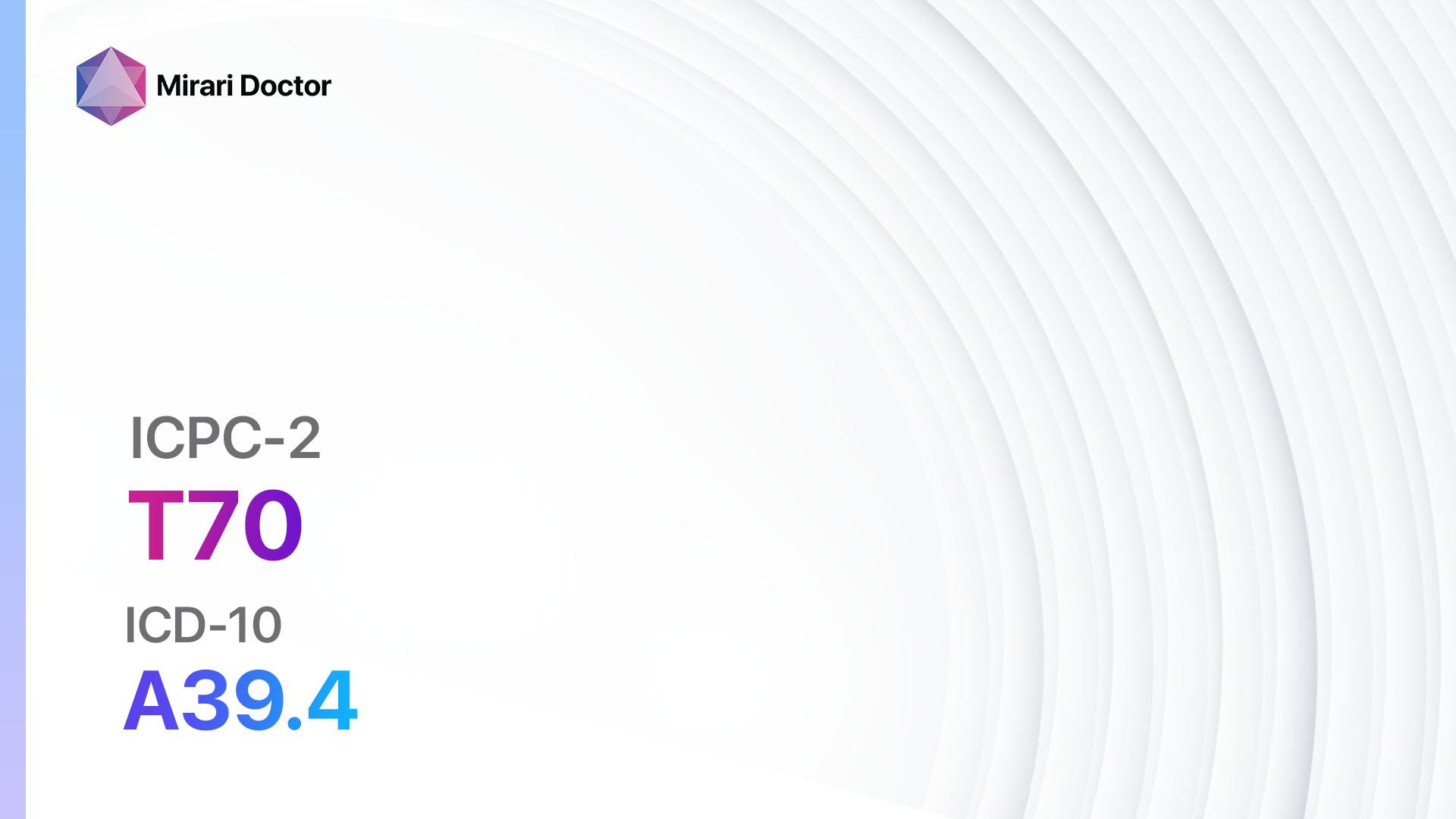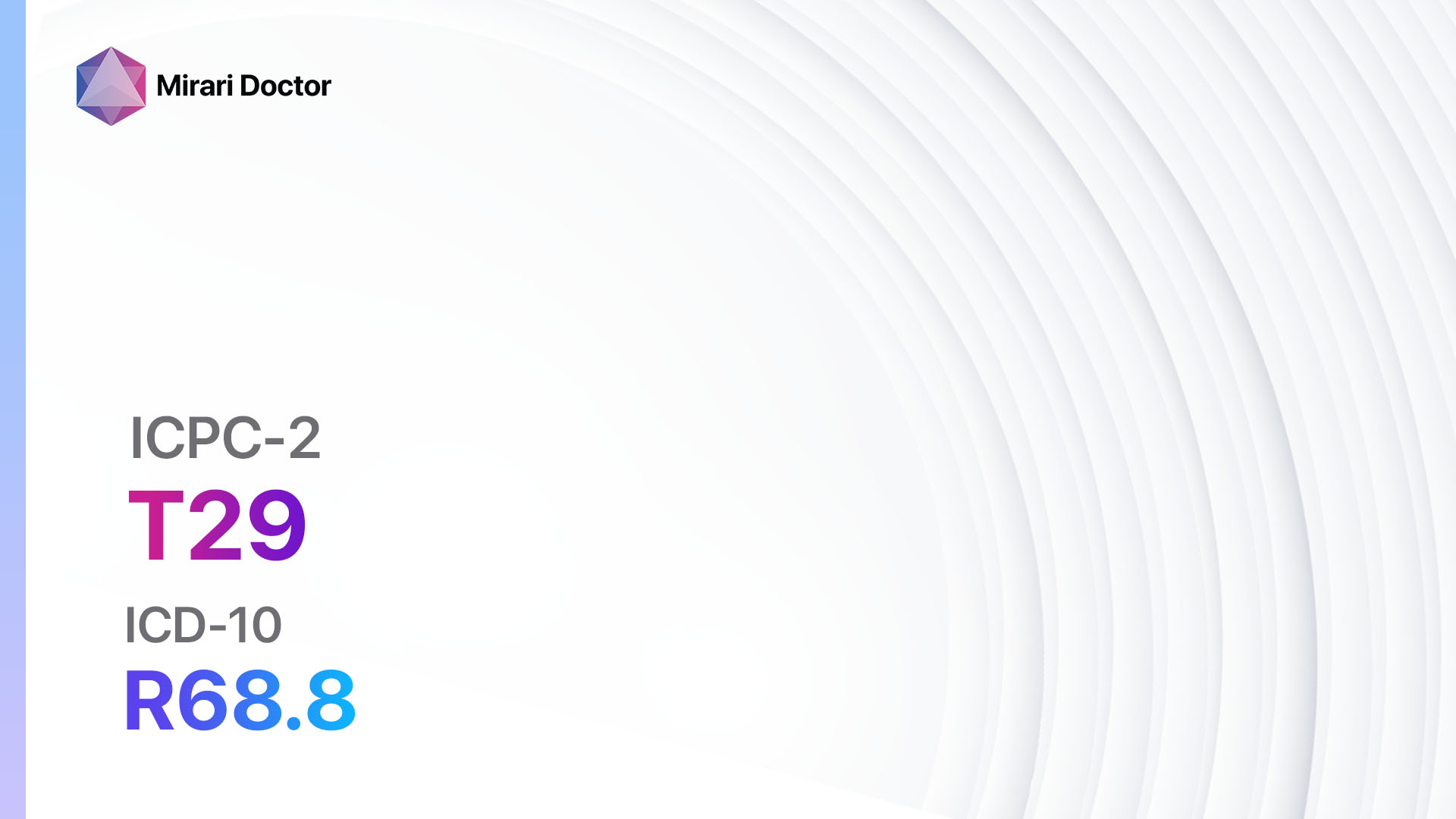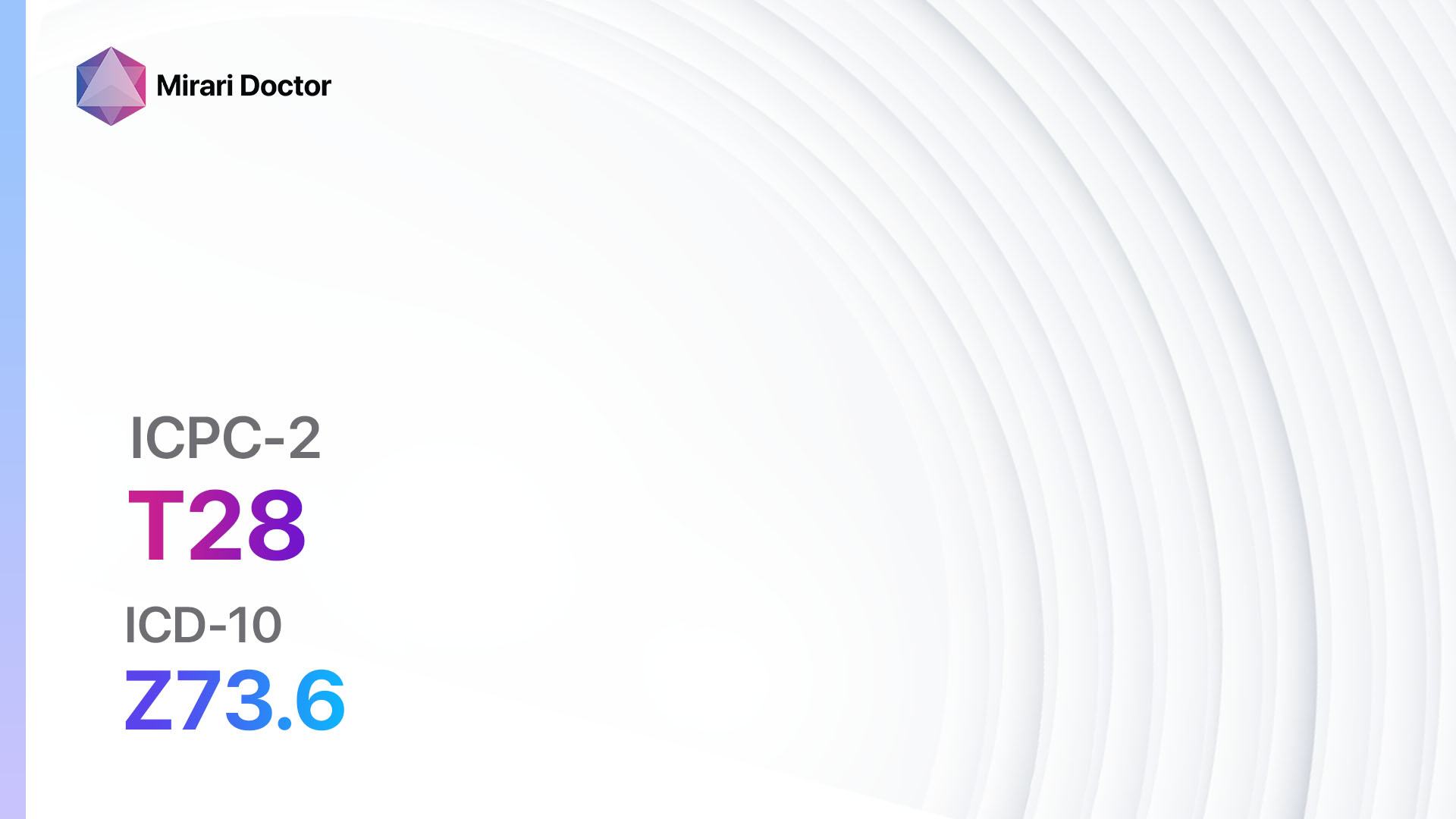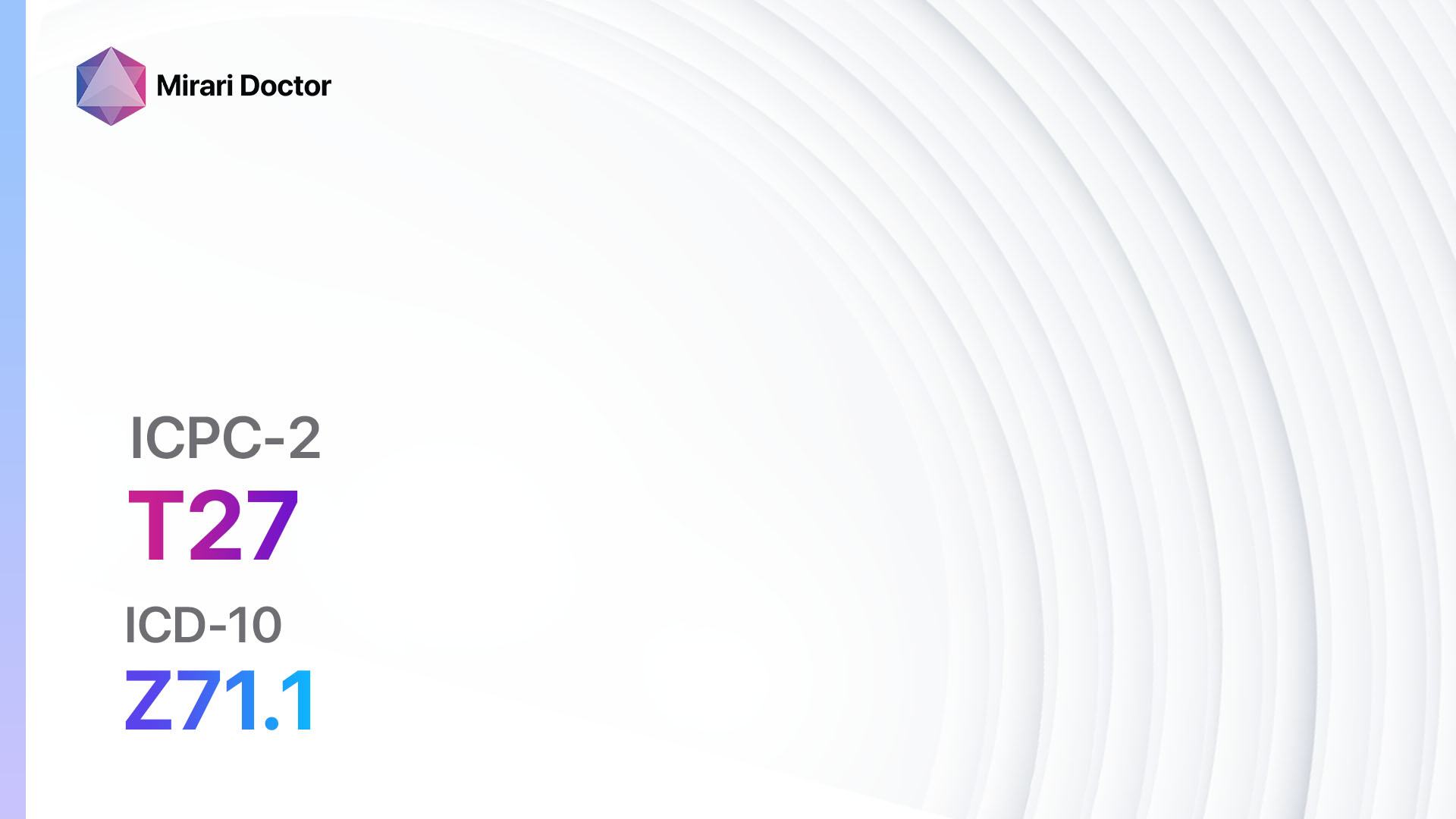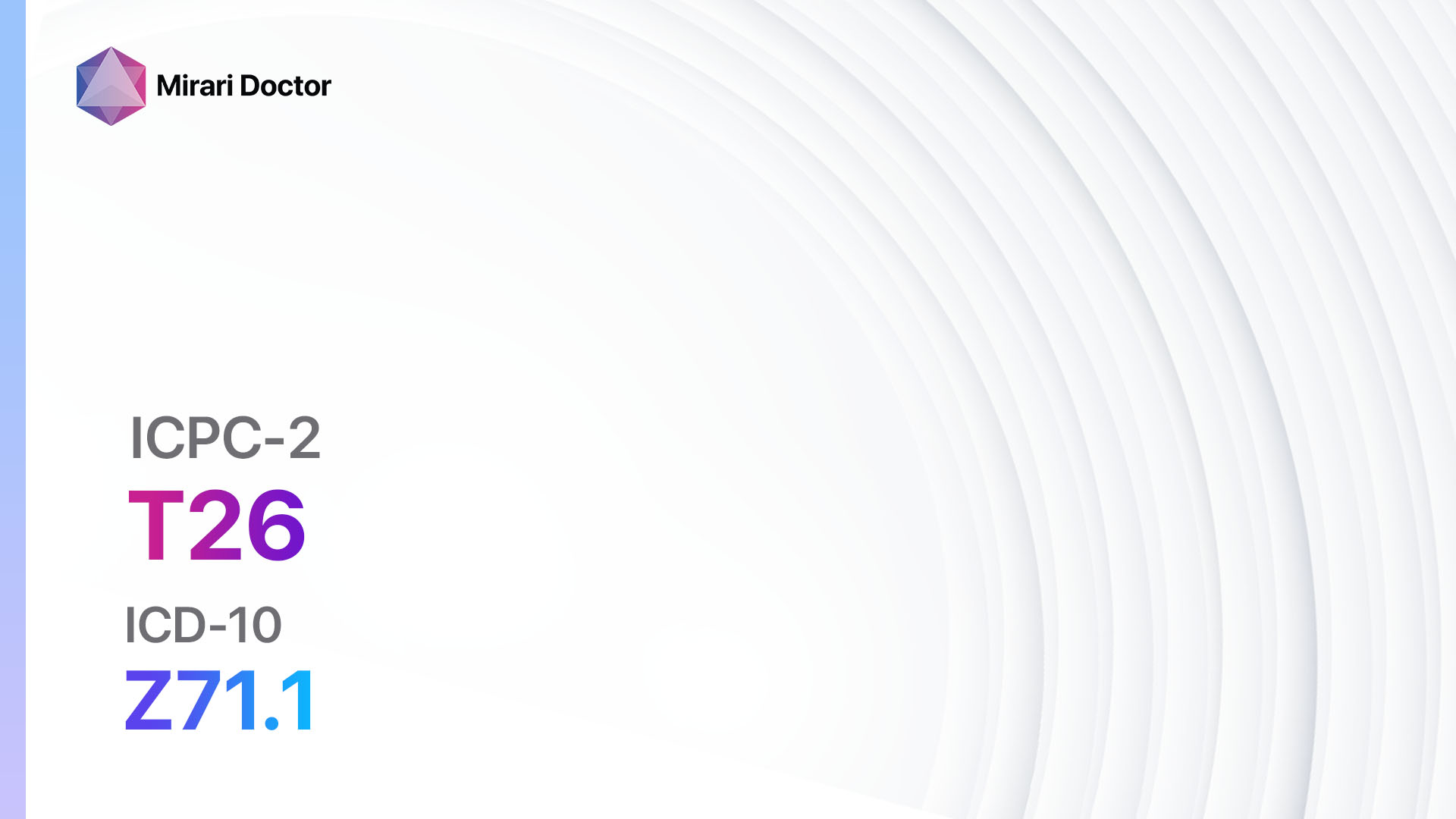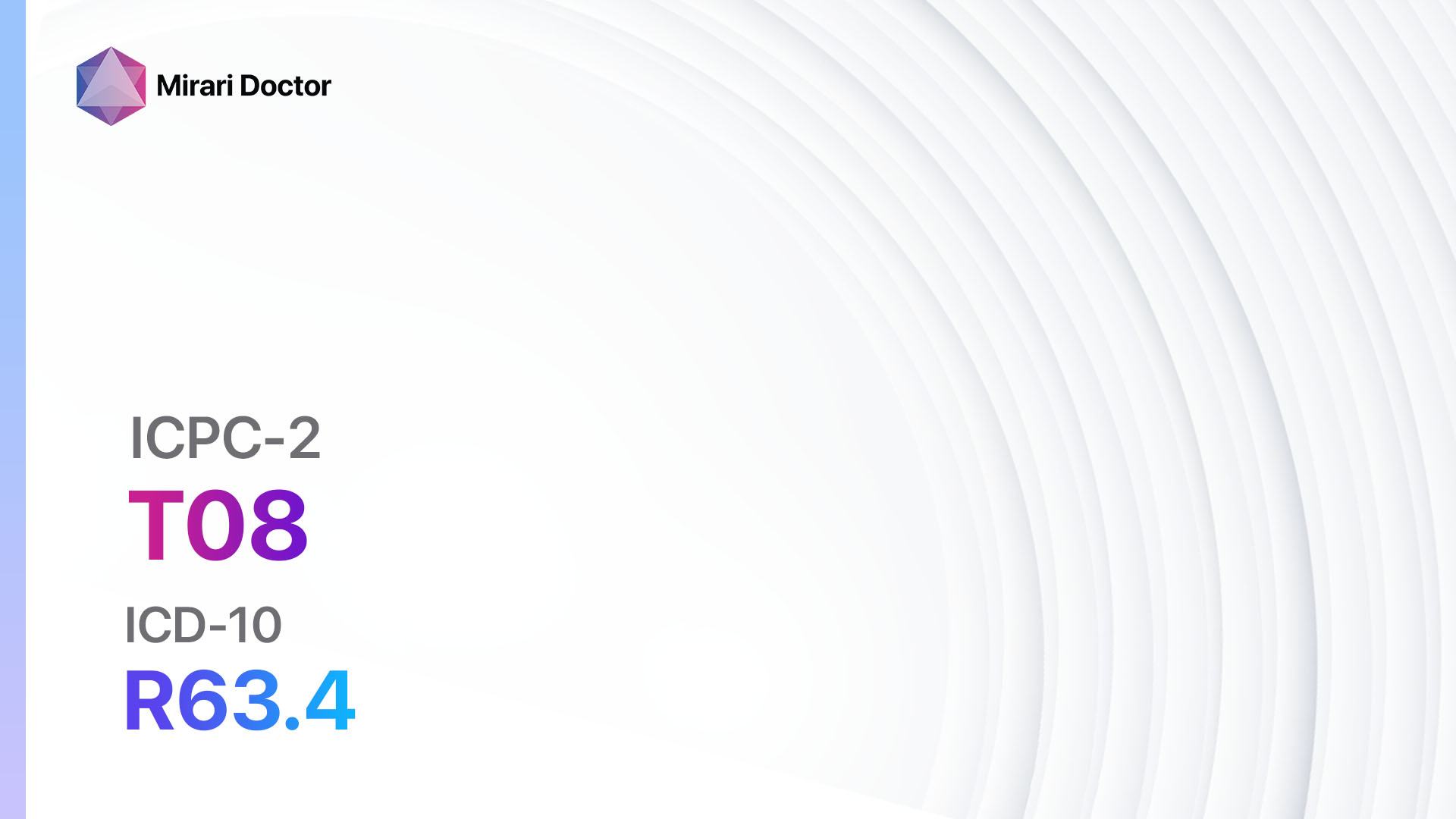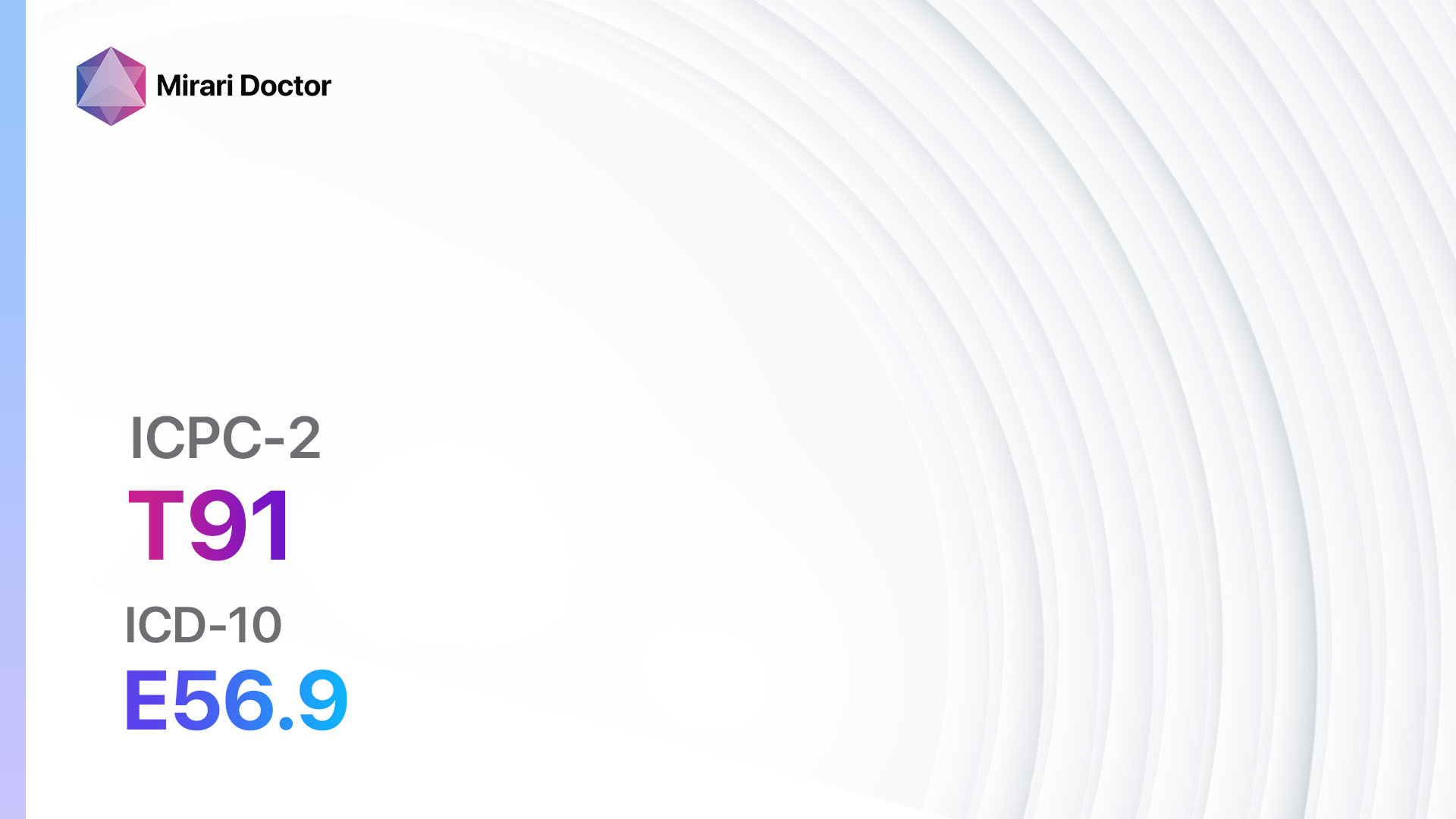
Introduction
Vitamin and nutritional deficiencies can have a significant impact on overall health and well-being[1]. This guide aims to provide healthcare professionals with a comprehensive approach to diagnosing and managing vitamin/nutritional deficiencies. By understanding the symptoms, causes, and appropriate diagnostic steps, healthcare professionals can effectively intervene and educate patients on the importance of proper nutrition.
Codes
Symptoms
- Fatigue: Feeling tired and lacking energy[2].
- Weakness: Reduced strength and muscle function.
- Pale skin: Skin appears lighter than usual.
- Shortness of breath: Difficulty breathing or feeling breathless.
- Dizziness: Feeling lightheaded or faint.
- Poor concentration: Difficulty focusing or paying attention.
- Hair loss: Experiencing excessive hair shedding or thinning[3].
- Brittle nails: Nails that are weak and prone to breaking.
- Mouth ulcers: Painful sores in the mouth.
- Poor wound healing: Delayed healing of cuts or wounds.
Causes
- Inadequate diet: Not consuming enough essential vitamins and nutrients[4].
- Malabsorption: Conditions that affect the absorption of nutrients in the digestive system.
- Alcoholism: Excessive alcohol consumption can interfere with nutrient absorption.
- Medications: Certain medications can deplete or interfere with nutrient absorption[5].
- Medical conditions: Chronic diseases or conditions that affect nutrient metabolism.
Diagnostic Steps
Medical History
- Gather information about the patient’s dietary habits and nutritional intake.
- Identify any risk factors for vitamin/nutritional deficiencies, such as alcoholism or malabsorption disorders.
- Assess for symptoms associated with specific nutrient deficiencies[6].
Physical Examination
- Observe for physical signs of vitamin/nutritional deficiencies, such as pale skin or hair loss.
- Check for signs of malnutrition, such as muscle wasting or poor wound healing.
- Assess for specific physical findings associated with certain nutrient deficiencies[7].
Laboratory Tests
- Complete blood count (CBC): To assess for anemia or other blood abnormalities.
- Serum vitamin levels: Measure the levels of specific vitamins, such as vitamin B12 or vitamin D[8].
- Iron studies: Evaluate iron levels and assess for iron deficiency anemia.
- Folate and B12 levels: Measure levels of these vitamins to assess for deficiencies.
- Thyroid function tests: Rule out thyroid disorders that may contribute to nutritional deficiencies.
- Liver function tests: Assess liver health, as liver disease can affect nutrient metabolism.
Diagnostic Imaging
- Bone density scan: Evaluate bone health and assess for osteoporosis, which may be related to vitamin D deficiency[9].
- Abdominal ultrasound: Assess the structure and function of the digestive system, which can impact nutrient absorption.
- X-rays: May be used to evaluate bone health or identify signs of malnutrition.
Other Tests
- Stool analysis: Assess for malabsorption disorders or gastrointestinal infections.
- Genetic testing: Identify genetic mutations that may affect nutrient metabolism.
- Endoscopy: Visualize the digestive tract and obtain biopsies for further evaluation[10].
Follow-up and Patient Education
- Schedule regular follow-up appointments to monitor progress and adjust treatment as needed.
- Educate patients about the importance of a balanced diet and the role of specific nutrients in maintaining health.
- Provide resources and support for patients to make dietary changes and address any barriers to proper nutrition.
Possible Interventions
Traditional Interventions
Medications:
Top 5 drugs for Vitamin/nutritional deficiency:
- Multivitamin supplements:
- Cost: $5-$30 per month.
- Contraindications: Allergy to specific vitamins or minerals.
- Side effects: Nausea, upset stomach.
- Severe side effects: Allergic reactions.
- Drug interactions: Certain medications may interact with specific vitamins or minerals.
- Warning: Follow recommended dosage and do not exceed daily limits.
- Iron supplements:
- Cost: $5-$20 per month.
- Contraindications: Hemochromatosis, certain gastrointestinal conditions.
- Side effects: Constipation, stomach cramps.
- Severe side effects: Iron overload.
- Drug interactions: Certain medications may reduce iron absorption.
- Warning: Take iron supplements with vitamin C to enhance absorption.
- Vitamin B12 injections:
- Cost: $10-$50 per injection.
- Contraindications: Allergy to cobalt or vitamin B12.
- Side effects: Injection site reactions.
- Severe side effects: Allergic reactions.
- Drug interactions: Certain medications may interfere with vitamin B12 absorption.
- Warning: Regular monitoring of vitamin B12 levels may be necessary.
- Calcium supplements:
- Cost: $5-$20 per month.
- Contraindications: Hypercalcemia, certain kidney conditions.
- Side effects: Constipation, bloating.
- Severe side effects: Kidney stones.
- Drug interactions: Certain medications may interfere with calcium absorption.
- Warning: Take calcium supplements with vitamin D for optimal absorption.
- Vitamin D supplements:
- Cost: $5-$20 per month.
- Contraindications: Hypercalcemia, certain kidney conditions.
- Side effects: Nausea, vomiting.
- Severe side effects: Hypercalcemia.
- Drug interactions: Certain medications may interfere with vitamin D metabolism.
- Warning: Regular monitoring of vitamin D levels may be necessary.
Alternative Drugs:
- Omega-3 fatty acid supplements: May help improve cardiovascular health and reduce inflammation. Cost: $10-$30 per month.
- Probiotics: Can support gut health and improve nutrient absorption. Cost: $10-$40 per month.
- Herbal supplements: Some herbs, such as ginseng or turmeric, may have potential benefits for overall health. Cost: Varies depending on the specific supplement.
Surgical Procedures:
- None applicable for the treatment of vitamin/nutritional deficiencies.
Alternative Interventions
- Acupuncture: May help improve overall well-being and support the body’s natural healing processes. Cost: $60-$120 per session.
- Chelation therapy: Controversial treatment involving the administration of chelating agents to remove heavy metals from the body. Cost: $75-$150 per session.
- Hyperbaric oxygen therapy: Involves breathing pure oxygen in a pressurized chamber to increase oxygen delivery to tissues. Cost: $200-$300 per session.
- Herbal supplements: Some herbs, such as garlic and ginkgo biloba, may have potential benefits for overall health. Cost: Varies depending on the specific supplement.
Lifestyle Interventions
- Dietary changes: Encourage a balanced diet rich in fruits, vegetables, whole grains, and lean proteins. Cost: Varies depending on individual food choices.
- Nutritional counseling: Provide guidance on meal planning and portion control to ensure adequate nutrient intake. Cost: $50-$150 per session.
- Exercise: Promote regular physical activity to support overall health and well-being. Cost: Varies depending on individual preferences (e.g., gym membership, fitness classes).
- Stress management: Encourage stress reduction techniques, such as meditation or yoga, to support overall health. Cost: Varies depending on individual preferences (e.g., meditation apps, yoga classes).
- Supplement education: Educate patients on the appropriate use of vitamin and mineral supplements to complement a healthy diet. Cost: Varies depending on individual supplement choices.
It is important to note that the cost ranges provided are approximate and may vary depending on the location and availability of the interventions.
Mirari Cold Plasma Alternative Intervention
Understanding Mirari Cold Plasma
- Safe and Non-Invasive Treatment: Mirari Cold Plasma is a safe and non-invasive treatment option for various skin conditions. It does not require incisions, minimizing the risk of scarring, bleeding, or tissue damage.
- Efficient Extraction of Foreign Bodies: Mirari Cold Plasma facilitates the removal of foreign bodies from the skin by degrading and dissociating organic matter, allowing easier access and extraction.
- Pain Reduction and Comfort: Mirari Cold Plasma has a local analgesic effect, providing pain relief during the treatment, making it more comfortable for the patient.
- Reduced Risk of Infection: Mirari Cold Plasma has antimicrobial properties, effectively killing bacteria and reducing the risk of infection.
- Accelerated Healing and Minimal Scarring: Mirari Cold Plasma stimulates wound healing and tissue regeneration, reducing healing time and minimizing the formation of scars.
Mirari Cold Plasma Prescription
Video instructions for using Mirari Cold Plasma Device – T91 Vitamin/nutritional deficiency (ICD-10:E56.9)
| Mild | Moderate | Severe |
| Mode setting: 7 (Immunotherapy) Location: 1 (Sacrum) Morning: 15 minutes, Evening: 15 minutes |
Mode setting: 7 (Immunotherapy) Location: 1 (Sacrum) Morning: 30 minutes, Lunch: 30 minutes, Evening: 30 minutes |
Mode setting: 7 (Immunotherapy) Location: 1 (Sacrum) Morning: 30 minutes, Lunch: 30 minutes, Evening: 30 minutes |
| Mode setting: 7 (Immunotherapy) Location: 4 (Heart, Bile & Pancreas) Morning: 15 minutes, Evening: 15 minutes |
Mode setting: 7 (Immunotherapy) Location: 4 (Heart, Bile & Pancreas) Morning: 30 minutes, Lunch: 30 minutes, Evening: 30 minutes |
Mode setting: 7 (Immunotherapy) Location: 4 (Heart, Bile & Pancreas) Morning: 30 minutes, Lunch: 30 minutes, Evening: 30 minutes |
| Mode setting: 7 (Immunotherapy) Location: 1 (Sacrum) Morning: 15 minutes, Evening: 15 minutes |
Mode setting: 7 (Immunotherapy) Location: 1 (Sacrum) Morning: 30 minutes, Lunch: 30 minutes, Evening: 30 minutes |
Mode setting: 7 (Immunotherapy) Location: 1 (Sacrum) Morning: 30 minutes, Lunch: 30 minutes, Evening: 30 minutes |
| Mode setting: 7 (Immunotherapy) Location: 7 (Neuro system & ENT) Morning: 15 minutes, Evening: 15 minutes |
Mode setting: 7 (Immunotherapy) Location: 7 (Neuro system & ENT) Morning: 30 minutes, Lunch: 30 minutes, Evening: 30 minutes |
Mode setting: 7 (Immunotherapy) Location: 7 (Neuro system & ENT) Morning: 30 minutes, Lunch: 30 minutes, Evening: 30 minutes |
| Total Morning: 60 minutes approx. $10 USD, Evening: 60 minutes approx. $10 USD |
Total Morning: 120 minutes approx. $20 USD, Lunch: 120 minutes approx. $20 USD, Evening: 120 minutes approx. $20 USD, |
Total Morning: 120 minutes approx. $20 USD, Lunch: 120 minutes approx. $20 USD, Evening: 120 minutes approx. $20 USD, |
| Usual treatment for 7-60 days approx. $140 USD – $1200 USD | Usual treatment for 6-8 weeks approx. $2,520 USD – $3,360 USD |
Usual treatment for 3-6 months approx. $5,400 USD – $10,800 USD
|
 |
|
Use the Mirari Cold Plasma device to treat Vitamin/nutritional deficiency effectively.
WARNING: MIRARI COLD PLASMA IS DESIGNED FOR THE HUMAN BODY WITHOUT ANY ARTIFICIAL OR THIRD PARTY PRODUCTS. USE OF OTHER PRODUCTS IN COMBINATION WITH MIRARI COLD PLASMA MAY CAUSE UNPREDICTABLE EFFECTS, HARM OR INJURY. PLEASE CONSULT A MEDICAL PROFESSIONAL BEFORE COMBINING ANY OTHER PRODUCTS WITH USE OF MIRARI.
Step 1: Cleanse the Skin
- Start by cleaning the affected area of the skin with a gentle cleanser or mild soap and water. Gently pat the area dry with a clean towel.
Step 2: Prepare the Mirari Cold Plasma device
- Ensure that the Mirari Cold Plasma device is fully charged or has fresh batteries as per the manufacturer’s instructions. Make sure the device is clean and in good working condition.
- Switch on the Mirari device using the power button or by following the specific instructions provided with the device.
- Some Mirari devices may have adjustable settings for intensity or treatment duration. Follow the manufacturer’s instructions to select the appropriate settings based on your needs and the recommended guidelines.
Step 3: Apply the Device
- Place the Mirari device in direct contact with the affected area of the skin. Gently glide or hold the device over the skin surface, ensuring even coverage of the area experiencing.
- Slowly move the Mirari device in a circular motion or follow a specific pattern as indicated in the user manual. This helps ensure thorough treatment coverage.
Step 4: Monitor and Assess:
- Keep track of your progress and evaluate the effectiveness of the Mirari device in managing your Vitamin/nutritional deficiency. If you have any concerns or notice any adverse reactions, consult with your health care professional.
Note
This guide is for informational purposes only and should not replace the advice of a medical professional. Always consult with your healthcare provider or a qualified medical professional for personal advice, diagnosis, or treatment. Do not solely rely on the information presented here for decisions about your health. Use of this information is at your own risk. The authors of this guide, nor any associated entities or platforms, are not responsible for any potential adverse effects or outcomes based on the content.
Mirari Cold Plasma System Disclaimer
- Purpose: The Mirari Cold Plasma System is a Class 2 medical device designed for use by trained healthcare professionals. It is registered for use in Thailand and Vietnam. It is not intended for use outside of these locations.
- Informational Use: The content and information provided with the device are for educational and informational purposes only. They are not a substitute for professional medical advice or care.
- Variable Outcomes: While the device is approved for specific uses, individual outcomes can differ. We do not assert or guarantee specific medical outcomes.
- Consultation: Prior to utilizing the device or making decisions based on its content, it is essential to consult with a Certified Mirari Tele-Therapist and your medical healthcare provider regarding specific protocols.
- Liability: By using this device, users are acknowledging and accepting all potential risks. Neither the manufacturer nor the distributor will be held accountable for any adverse reactions, injuries, or damages stemming from its use.
- Geographical Availability: This device has received approval for designated purposes by the Thai and Vietnam FDA. As of now, outside of Thailand and Vietnam, the Mirari Cold Plasma System is not available for purchase or use.
References
- World Health Organization. (2021). Micronutrient deficiencies. Retrieved from https://www.who.int/nutrition/topics/micronutrients/en/
- Mayo Clinic. (2021). Vitamin deficiency anemia. Retrieved from https://www.mayoclinic.org/diseases-conditions/vitamin-deficiency-anemia/symptoms-causes/syc-20355025
- American Academy of Dermatology Association. (2021). Hair loss: Who gets and causes. Retrieved from https://www.aad.org/public/diseases/hair-loss/causes/18-causes
- National Institutes of Health. (2021). Vitamin and Mineral Supplement Fact Sheets. Retrieved from https://ods.od.nih.gov/factsheets/list-all/
- Mohn, E. S., Kern, H. J., Saltzman, E., Mitmesser, S. H., & McKay, D. L. (2018). Evidence of Drug-Nutrient Interactions with Chronic Use of Commonly Prescribed Medications: An Update. Pharmaceutics, 10(1), 36.
- Linus Pauling Institute. (2021). Micronutrient Information Center. Retrieved from https://lpi.oregonstate.edu/mic
- Sizar, O., Khare, S., Goyal, A., Bansal, P., & Givler, A. (2021). Vitamin Deficiency. In StatPearls. StatPearls Publishing.
- National Heart, Lung, and Blood Institute. (2021). Blood Tests. Retrieved from https://www.nhlbi.nih.gov/health-topics/blood-tests
- National Osteoporosis Foundation. (2021). Bone Density Exam/Testing. Retrieved from https://www.nof.org/patients/diagnosis-information/bone-density-examtesting/
- American Society for Gastrointestinal Endoscopy. (2021). Understanding Upper Endoscopy. Retrieved from https://www.asge.org/home/for-patients/patient-information/understanding-upper-endoscopy
Related articles
Made in USA


